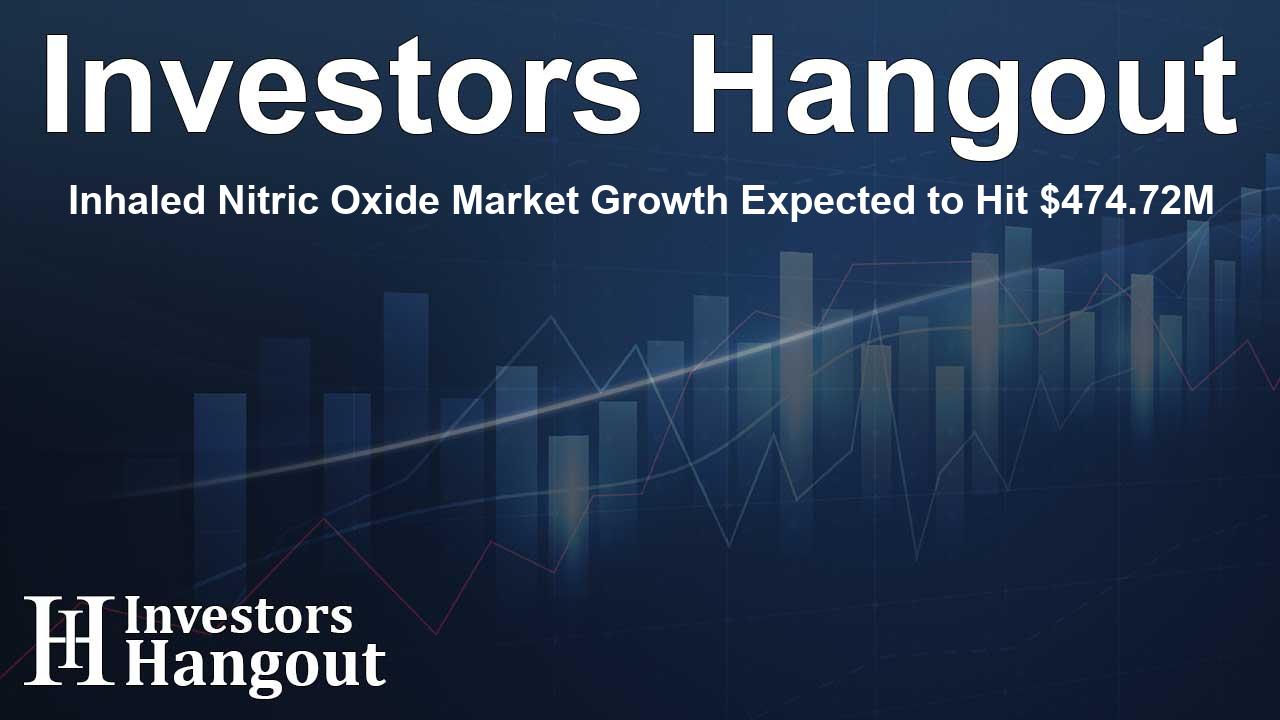Inhaled Nitric Oxide Market Growth Expected to Hit $474.72M

Inhaled Nitric Oxide Market Forecast and Insights
The inhaled nitric oxide market has shown remarkable growth, valued at US$ 266.17 million recently, with projections estimating it will soar to US$ 474.72 million by 2033. This reflects a compound annual growth rate (CAGR) of 6.64% from 2025 to 2033. As advancements in technology and increasing clinical demand converge, hospitals are becoming the primary users of inhaled nitric oxide therapies, particularly in neonatal care settings.
Clinical Applications and Advancements in Technology
Neonatal units are seeing enhanced therapeutic applications of inhaled nitric oxide, especially for managing respiratory complications in premature infants. Although traditional cylinder-based systems remain prevalent in acute care, there is an increasing acceptance of integrated nitric oxide delivery systems. The recent commissioning of manufacturing lines dedicated to specialized nitric oxide cylinders demonstrates the industry's commitment to innovation. For example, several hospitals in various countries have started integrating novel devices and technologies into their practices to improve patient outcomes.
Recent Developments in Leading Countries
In the United States, innovative practices have emerged, with 42 manufacturing lines being dedicated to specialized nitric oxide systems and 15 hospitals adopting modern consoles aimed at adult respiratory care. Notably, leading cardiac centers in various regions have begun utilizing inhaled nitric oxide to manage certain heart failure cases, reflecting its growing importance across more diverse applications. Furthermore, Brazil has ramped up efforts by establishing pediatric-focused wards dedicated to nitric oxide therapy, highlighting a global inclination toward these advanced respiratory treatments.
Innovations from Market Leaders
Key players in the inhaled nitric oxide market are distinguishing themselves through innovation, with significant advancements noted in purification and delivery methods. For instance, Mallinckrodt has reported enhancements in neonatal device functionality. Additionally, Air Liquide has constructed facilities focused on refining nitric oxide filtration processes, demonstrating a commitment to high purities across various clinical environments. The landscape of competition is evolving fast, as companies like Linde push the bar even higher with new portable solutions for emergency response vehicles.
Market Drivers and Future Outlook
The inhaled nitric oxide market is being driven by numerous factors, including a rising demand for advanced neonatal care solutions and the incorporation of nitric oxide medications into standard ARDS management protocols. Critical respiratory conditions require innovative therapies, and the integration of cardiopulmonary applications showcases the vast potential for patient recovery improvements.
Challenges Facing the Industry
Despite the enthusiasm around inhaled nitric oxide advancements, challenges persist such as device calibration issues and supply chain disruptions impacting access to essential components. Diverse clinical outcomes across various hospitals also affect the widespread adoption of these therapies, indicating that while the demand is growing, there are hurdles that need addressing to ensure consistency and reliability in therapeutic outcomes.
Regulatory and Clinical Protocols Guiding the Market
As the market expands, compliance with regulatory frameworks around inhaled nitric oxide remains critical. The Food and Drug Administration has issued new guidelines that provide clarity on nitric oxide purity. Moreover, partnerships among medical associations and regulatory bodies further contribute to the establishment of safe and consistent protocols for the administration of inhaled nitric oxide. These measures help bolster confidence in adopting these therapies across healthcare settings.
Closing Thoughts on the Inhaled Nitric Oxide Market
The inhaled nitric oxide market's trajectory indicates not only growth but a significant evolution in patient care standards. Given the ongoing innovations and clinical integration, we are likely to see increased focus on personalized treatment protocols in the near future. As healthcare providers leverage advanced technologies to improve respiratory therapies, patient outcomes in critical care settings stand to benefit tremendously.
Frequently Asked Questions
What is the current market value of inhaled nitric oxide?
The inhaled nitric oxide market is currently valued at approximately US$ 266.17 million.
When is the market for inhaled nitric oxide expected to reach US$ 474.72 million?
The market is projected to reach US$ 474.72 million by 2033.
What are the primary applications for inhaled nitric oxide?
The primary applications include treating respiratory complications in neonates and managing acute respiratory distress syndrome (ARDS).
Which countries are leading in inhaled nitric oxide adoption?
Key countries leading in adoption include the United States, Germany, Brazil, Japan, and China due to strong clinical demand.
What challenges does the inhaled nitric oxide market face?
The market faces challenges such as device calibration complexities, supply chain issues, and variations in clinical outcomes across hospitals.
About Investors Hangout
Investors Hangout is a leading online stock forum for financial discussion and learning, offering a wide range of free tools and resources. It draws in traders of all levels, who exchange market knowledge, investigate trading tactics, and keep an eye on industry developments in real time. Featuring financial articles, stock message boards, quotes, charts, company profiles, and live news updates. Through cooperative learning and a wealth of informational resources, it helps users from novices creating their first portfolios to experts honing their techniques. Join Investors Hangout today: https://investorshangout.com/
Disclaimer: The content of this article is solely for general informational purposes only; it does not represent legal, financial, or investment advice. Investors Hangout does not offer financial advice; the author is not a licensed financial advisor. Consult a qualified advisor before making any financial or investment decisions based on this article. The author's interpretation of publicly available data shapes the opinions presented here; as a result, they should not be taken as advice to purchase, sell, or hold any securities mentioned or any other investments. The author does not guarantee the accuracy, completeness, or timeliness of any material, providing it "as is." Information and market conditions may change; past performance is not indicative of future outcomes. If any of the material offered here is inaccurate, please contact us for corrections.